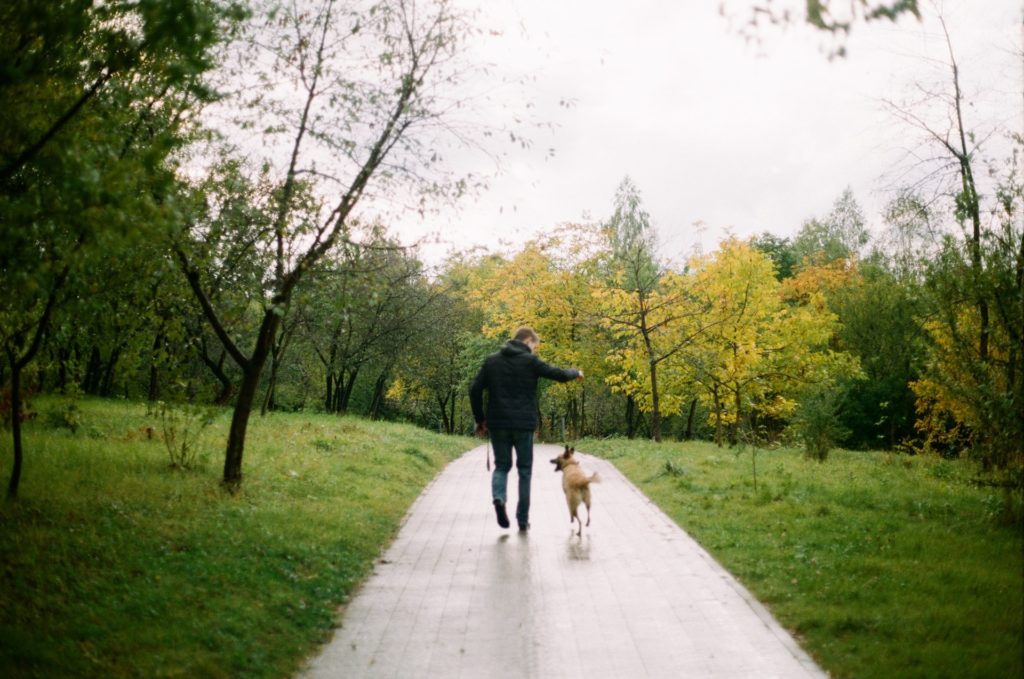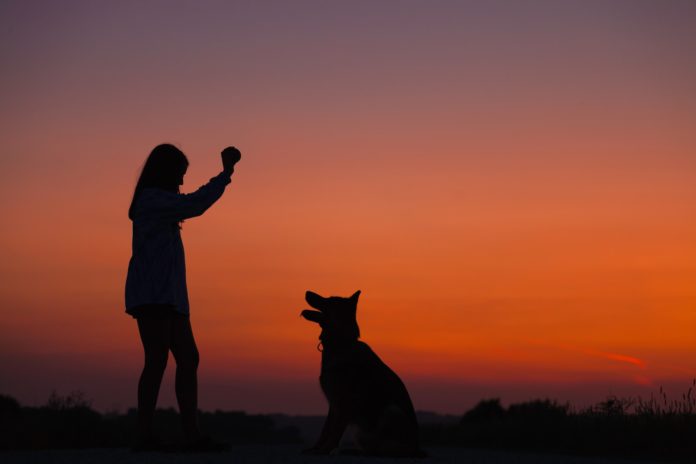Before starting the training journey of your dog to walk on a free leash, you require the following mentioned things:
- A comfortable leash of length 4 to 6 feet.
- A neck collar.
- A lot of treats for your dog.
- A stopwatch for measuring time and patience.
- Practice, practice, and more practice daily.
Begin Young
Start your training journey with younger dogs as they are quick in learning, and the faster you get them used to a collar, leash, and outdoor, the faster they learn good etiquettes.

Begin your training Inside the Home
If you keep young dogs or puppies inside your home, or you do not have any open area around you, then you must train them inside your home. When you are at home, get your dog and then start walking with your dog a couple of steps. If your dog follows your orders and walks according to that, give them a treat in the form of a meal. Do not use a chain inside the home. Make it free! Practice this regularly inside your home with different methods like walking a couple of steps in advance with your dog and then call your dog to get a treat.
Head Outside
Next, go outside the home in an open field where there is less interruption. Continuously ensure the chain is free. It truly doesn’t make a difference what hand you hold the chain in. However, you should have a lot of treats. Order your canine and begin strolling.
After the home training, go out with your dog, preferably in a wide area with less human interaction. Ensure that the leash is not as tight as it unease your dog. Order your dog and start walking, having the treat in your hands. When they do not concentrate or begin to pull, stop your activity. Return and call them again. If they come back to you, give them a treat, and repeat this process. Your dog understands this procedure too. It is a good approach to train cats and dogs with the leash around the neck, permitting free dog walks.
Set the time limit for training
While training your dog how to walk smoothly on a free leash, do not cause them to suffer for long hours. Repeat the training for around five to fifteen minutes and always give breaks. Perform it twice a day, and within a couple of days, your dog will be trained to get what is needed.
Make it pleasurable
Although dogs like to soothe their masters, they also need some relaxation. It would be better practice to combine the training with fun making activities involving some running or playing with a ball. While training, bring your dog’s favorite toy with you.
Be polite and never scream at your dog
Make it clear that your dog will take some time to understand the training and in marking their domain. Considering it as your dog’s behavior. As a master, you have to accept some behaviors of your dog with an open heart, and you may have to change how you walk.
Distractions
In the case of several distractions during the training, give your dog a treat, and continue the training. Some cases demand you to alter your direction to avoid any interference. Dogs get excited when they see different animals around themselves and are difficult to put on a leash. Try not to harm your dog and be gentle to him.
Some of the practices that make the loose leash walking activity easy and amazing are mentioned here. Keeping the above-mentioned points clear in our mind, you can train your dog to walk freely on a leash.
- Be available! Being present at the moment means not responding to any phone calls during the training. Engage with your dog to create a better understanding. Playing with your dog is a good practice, but watch out for your dog and concentrate more on him, at least during training.
- Carry Treats! The packet of treats is always useful in the training session. Dogs have a check-in attitude during training. You must take treats with you on every walk with your dog. Play different games like hiding treats in different locations and letting your dog sniff them.
- Allow your dog, sniff! Very less dogs get sufficient exercise from the daily loose leash walk. We humans, as compared to dogs, walk slowly, but that does not prove that the only walk is not a vital exercise for your dog. Train your dog to sniff things through his nose as it is the most important part of his body. Sniffing increases the investigation ability of your dog.

